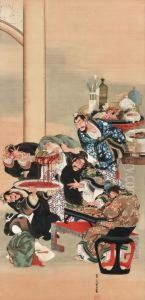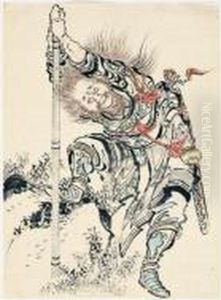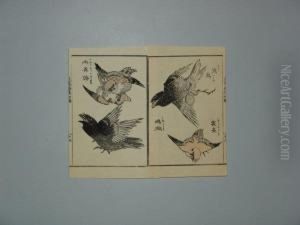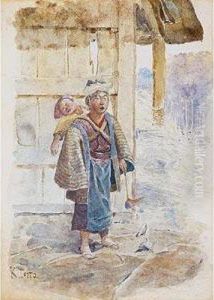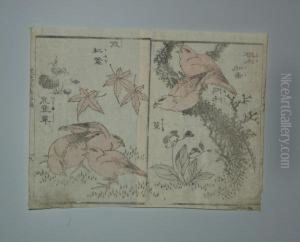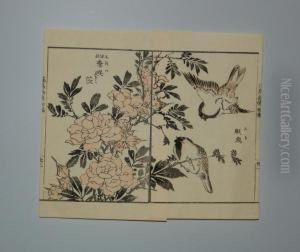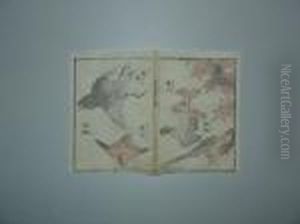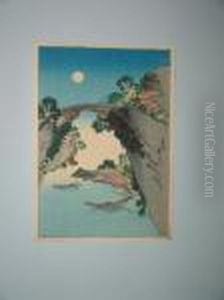Katsushika Ii Taito Paintings
Katsushika Ii Taito, also known as Iitsu, was a Japanese artist who lived during the late Edo period. Born in Edo (modern-day Tokyo) in 1797, he was the second son of the renowned ukiyo-e artist Katsushika Hokusai. Following the artistic path of his illustrious father, Taito initially went by the name Katsushika Hokusai II, suggesting a direct succession and inheritance of his father's artistry.
Taito's personal style, while influenced by his father, eventually developed its own distinct characteristics. He was particularly skilled in kachō-ga (pictures of flowers and birds), a genre that Hokusai himself had excelled in. Taito's work is notable for its delicate lines and attention to detail, as well as the vibrant use of color that became a hallmark of the ukiyo-e style.
Throughout his career, Taito produced a variety of woodblock prints, including landscapes and portraits, but his kachō-ga remained the most celebrated. He also created a significant number of book illustrations, contributing to the popular practice of publishing illustrated books and novels during the Edo period. These works often included kyōka, humorous and satirical poems, which were a popular literary form at the time.
Despite being the son of Hokusai, one of the most famous artists in Japan, Taito did not achieve the same level of fame as his father. His works, however, have been appreciated for their own merits and contribute to the rich tapestry of ukiyo-e art. Taito's career continued until his death in 1858, leaving behind a legacy that, while overshadowed by Hokusai, remains significant in the history of Japanese art.
Taito's artistry reflects the broader trends of the Edo period's culture and aesthetics, as ukiyo-e woodblock prints were an integral part of Japanese popular culture. His contributions to the world of Japanese art continued the legacy of his father while also showcasing his unique talents and perspectives as an artist of the late Edo period.
